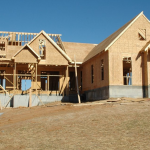Scaffolding is an indispensable part of many construction projects, providing workers with the necessary support and access during the building process. Whether constructing a high-rise building or renovating a small home, a reliable and efficient scaffolding system is key to a successful outcome. But it’s not just about throwing up some metal bars and wooden planks; scaffolding demands meticulous planning, selection of quality materials, and adherence to safety protocols.
This blog post aims to arm you with expert tips on the dos and don’ts of scaffolding, enabling you to conduct your construction work in a way that is both effective and productive. We’ll delve into the essential aspects, from planning and design to assembly, usage, and dismantling, so you can get the job done confidently and competently.
To underscore the importance of this topic, consider this: the Occupational Safety and Health Administration (OSHA) reports that scaffolding-related accidents are one of the leading causes of fatalities and injuries in construction. Ignoring proper scaffolding practices is not just inefficient—it’s dangerous.
So, let’s get started. Adhering to these best practices can significantly mitigate risks, enhance productivity, and ensure your construction project runs smoothly.

Planning and Design
Do: Conduct a Risk Assessment
Conducting a comprehensive risk assessment is imperative before erecting the first piece of scaffolding. A risk assessment systematically examines all the elements involved in the construction work to identify potential hazards and determine ways to mitigate them. This involves evaluating the site conditions, considering the weight and types of materials to be used, the height of the scaffolding, and many other factors that could compromise safety.
Ignoring the importance of a risk assessment could result in catastrophic failure, endangering both lives and resources. The assessment guides your planning and informs the rest of the decision-making process, ensuring safety measures and contingency plans are in place. It also helps estimate the budget more accurately, considering all elements, including safety measures, that could affect costs.
Don’t: Skip the Planning Stage
It might be tempting to jump straight into the assembly phase, particularly on smaller projects with minimal risks. However, this is a major pitfall that should be avoided. Lack of planning can result in inefficiencies that delay the project and drive up costs. Even worse, it could lead to safety hazards that endanger workers’ lives. A well-thought-out plan, based on the risk assessment, is your roadmap for a smooth and safe construction operation.
Selection of Materials
Do: Choose Quality Over Price
The adage “you get what you pay for” holds true regarding materials. Cutting costs by opting for cheaper scaffolding materials might be tempting, but doing so could jeopardise the entire project. High-quality materials are specifically engineered to withstand the loads and stresses they’ll face, reducing the risk of accidents caused by material failure. Hiring from reputable companies like BT Scaffolding ensures the quality is high.
Quality materials are also more durable, meaning they can be reused across multiple projects, offering long-term financial benefits that offset their initially higher cost. The bottom line is that when safety and structural integrity are at stake, quality should never be compromised.
Don’t Use Mismatched or Damaged Materials
At times, construction teams may think they can ‘make do’ with mismatched or damaged scaffolding materials, especially under time or budget constraints. This is a perilous approach. Using mismatched materials can lead to an unstable structure, as they may not fit together as precisely as materials from a single, consistent source.
Damaged materials, such as corroded tubes or cracked planks, can suddenly fail, causing sections of the scaffolding to collapse. These lapses risk lives and can also set back the project timeline and inflate costs due to emergency repairs and potential legal complications.
Assembly and Inspection
Do: Follow Manufacturer Guidelines
Once you have your high-quality materials and a solid plan, it’s time to start assembling the scaffolding. Here, following the manufacturer’s guidelines to the letter is crucial. These guidelines are designed based on rigorous testing and should be considered the definitive authority on safely and efficiently erecting the scaffolding. Ignoring them can result in structural weaknesses that are not immediately visible but could lead to disastrous consequences.
Don’t: Assemble Without a Qualified Supervisor
It’s easy to underestimate the complexity of assembling a scaffolding system. But even a seemingly minor mistake during assembly can have significant repercussions. That’s why having a qualified supervisor overseeing the process is essential. A trained supervisor knows how to interpret the manufacturer’s guidelines and understands the engineering principles that underpin the scaffolding’s structural integrity. They can also catch and correct small errors before they become big problems, ensuring that the scaffolding is safe and efficient to use.








Recent Comments